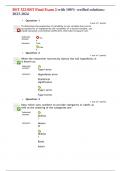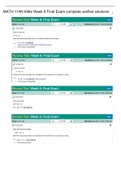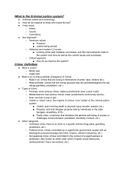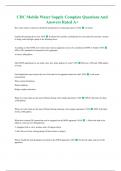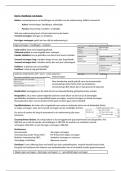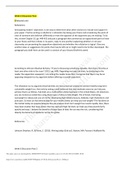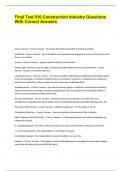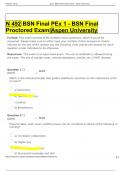Exam (elaborations)
Travels of a T-Shirt questions - revised - All Answers are Correct
- Module
- Institution
Travels of a T-Shirt in the Global Economy, 2 nd Ed. Chapter by Chapter Questions for Content and Discussion KING COTTON Chapter 1: How America has Dominated the Global Cotton Industry for 200 Years Questions for Content: 1. Consider the various risks faced by cotton growers each season. How ...
[Show more]




